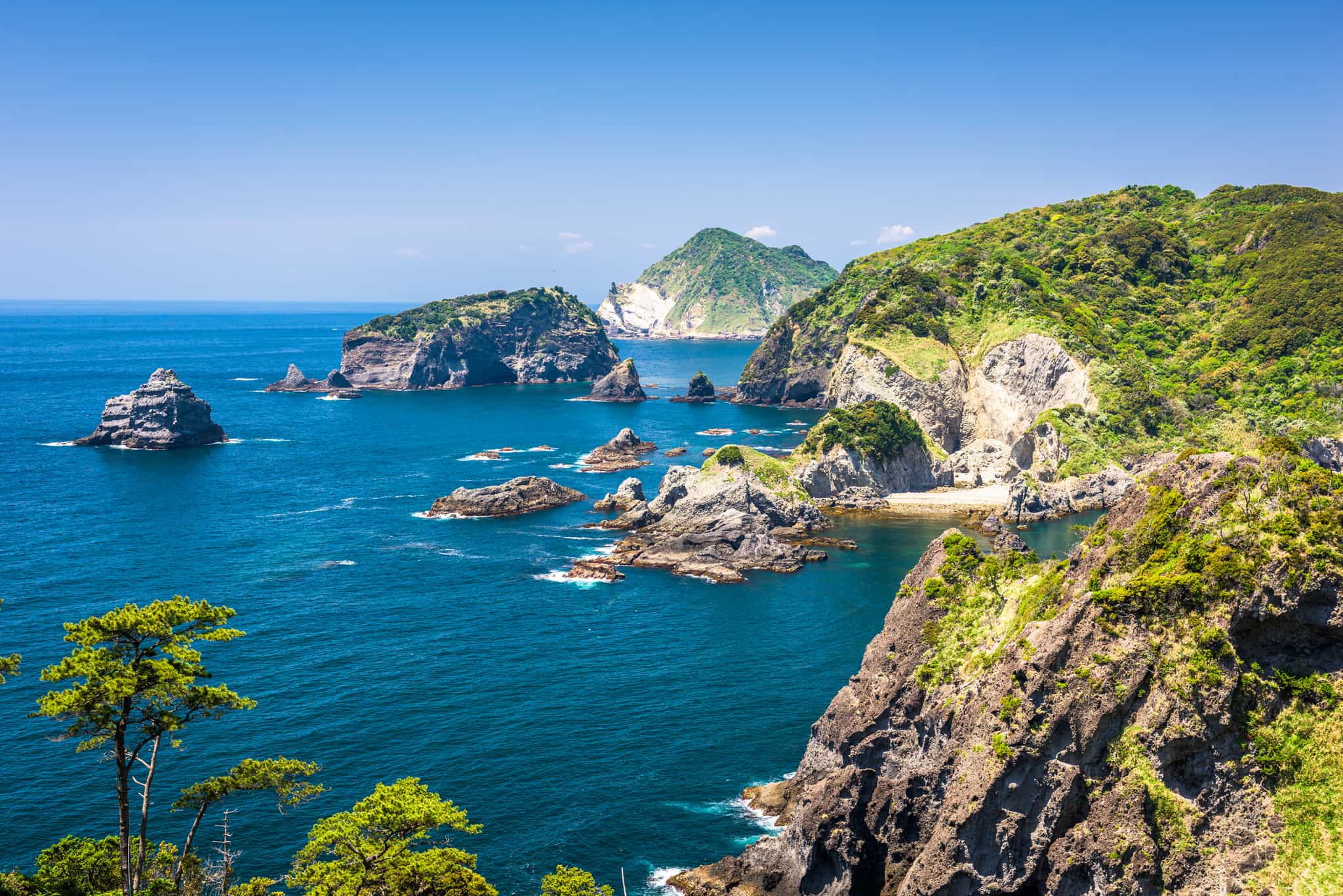
Kayak and Hike the Japanese Wilderness
Paddle the tropical coastline of the volcanic Izu Peninsula and take on a section of the sacred Mt Fuji pilgrimage trail
What's Included?
Small Like-minded Groups
Solo-friendly by design, join our small n’ sociable groups of up to 10 like-minded, active and outdoorsy people…
…
What's it like?

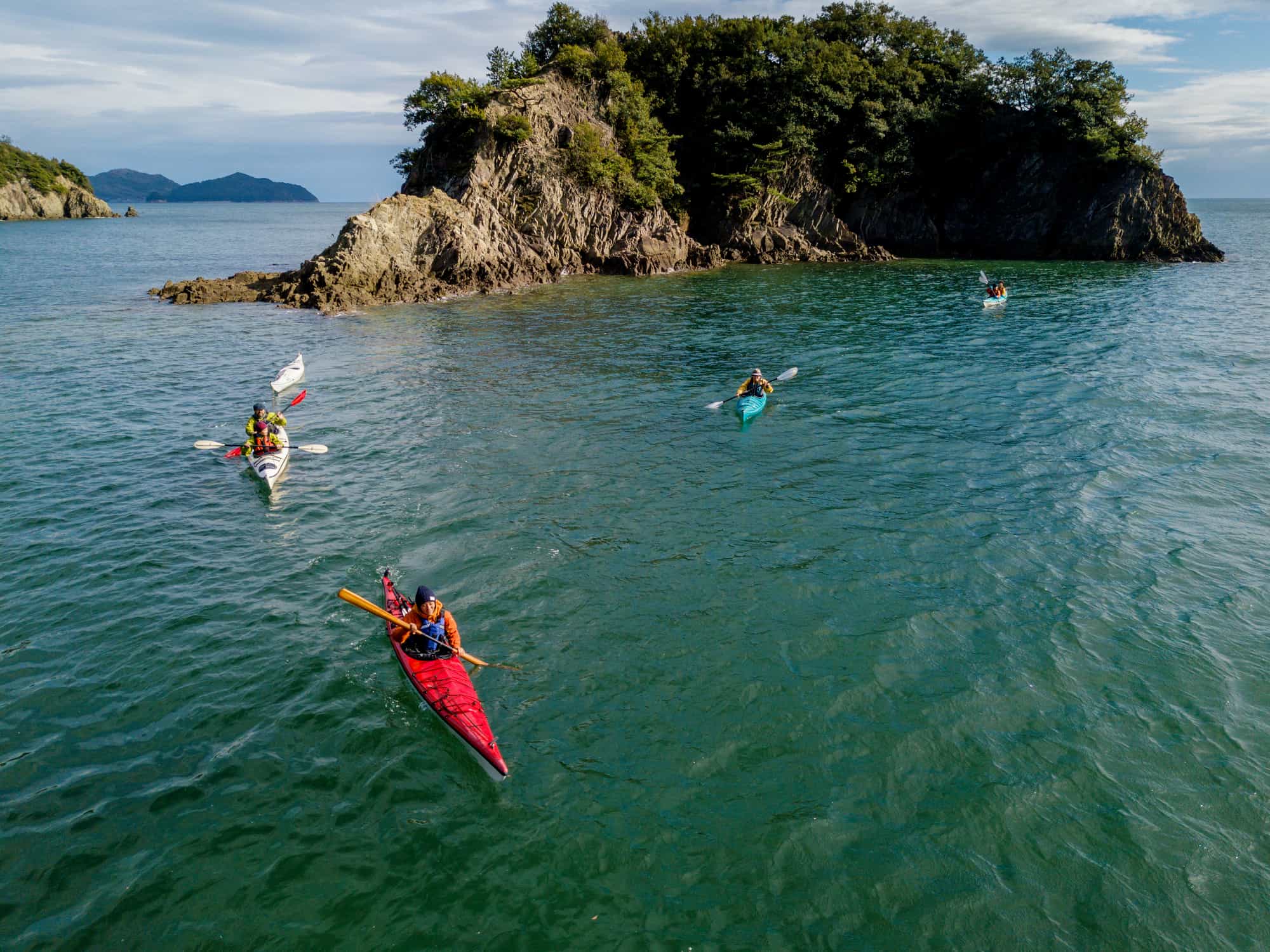
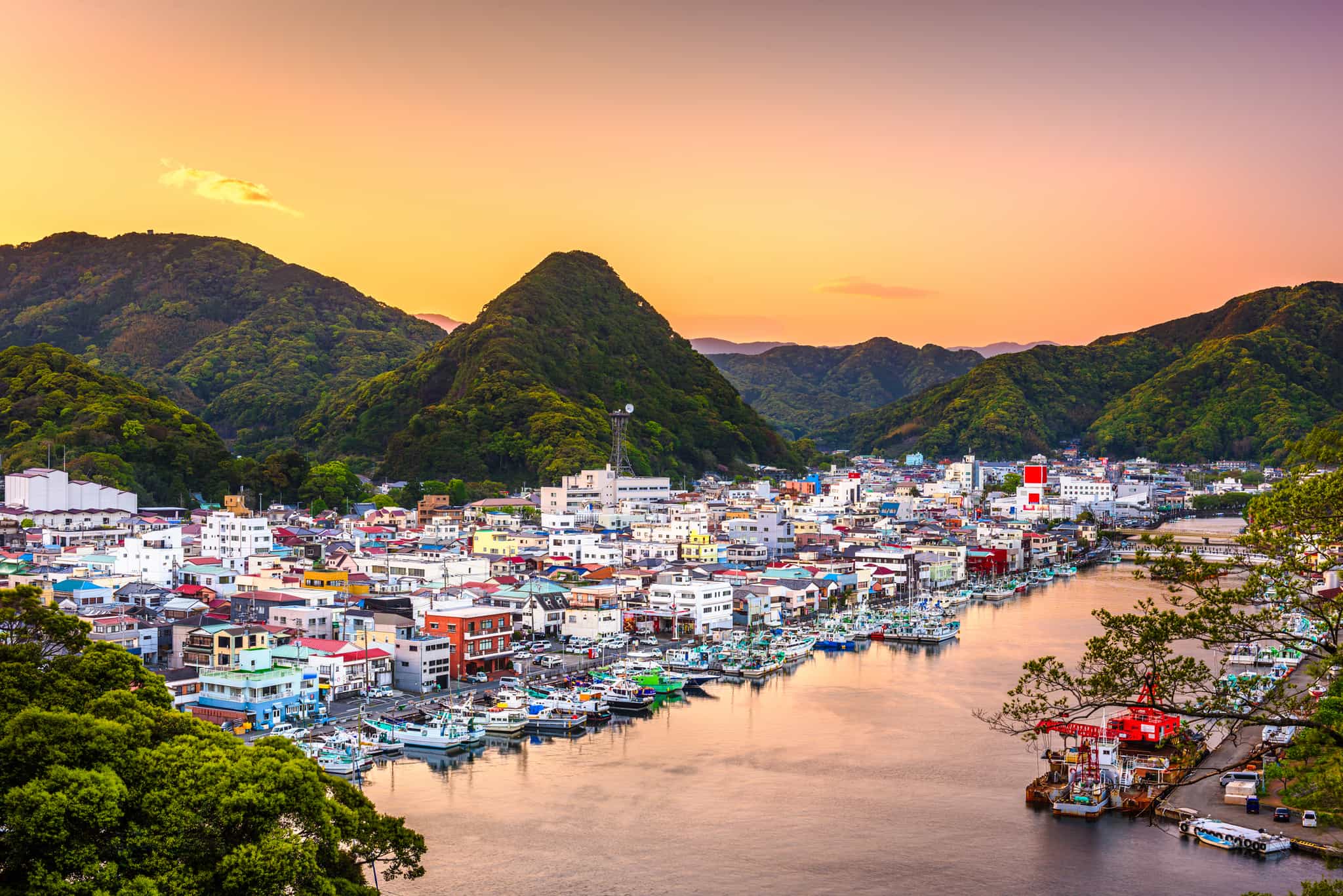
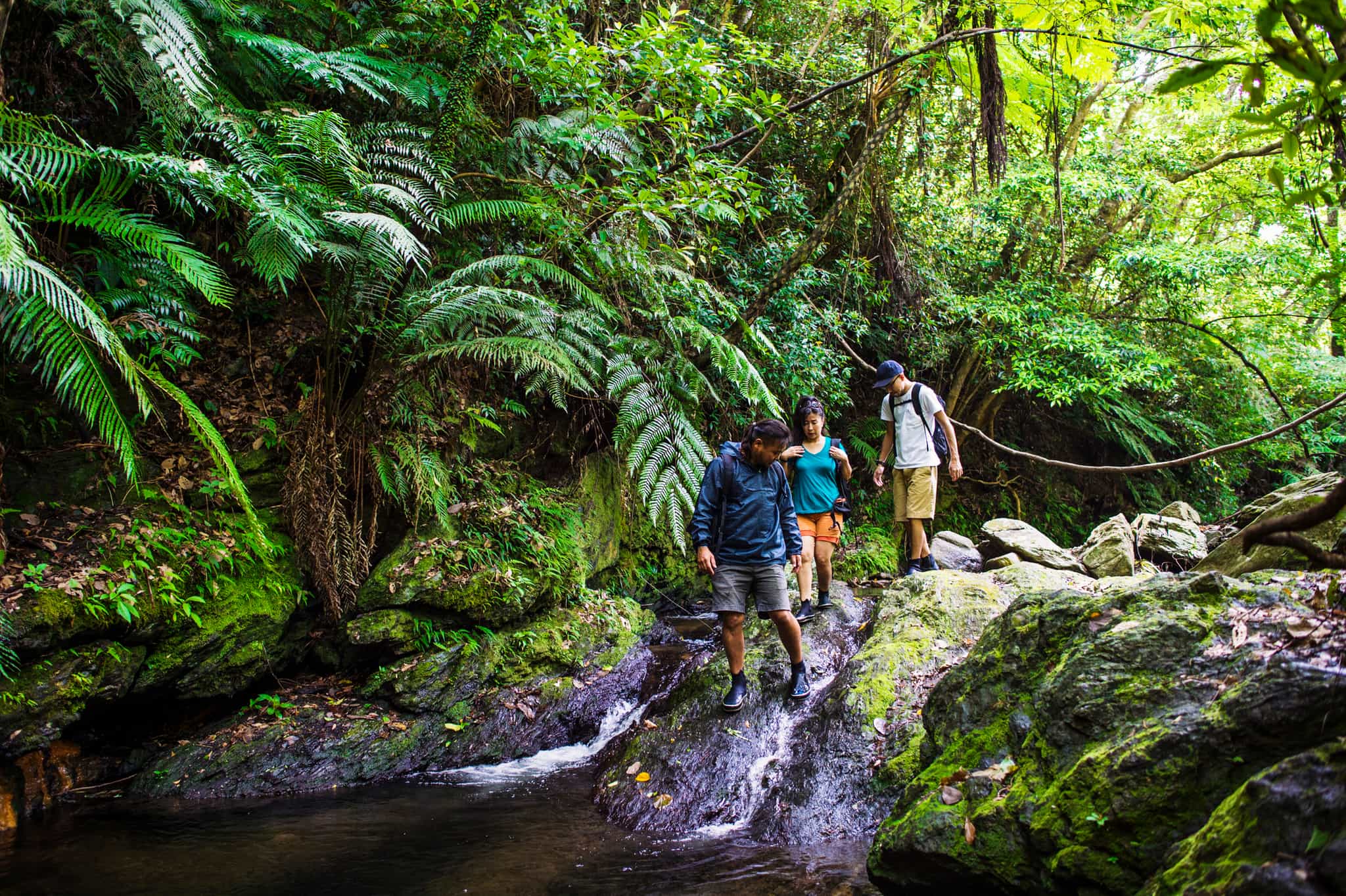
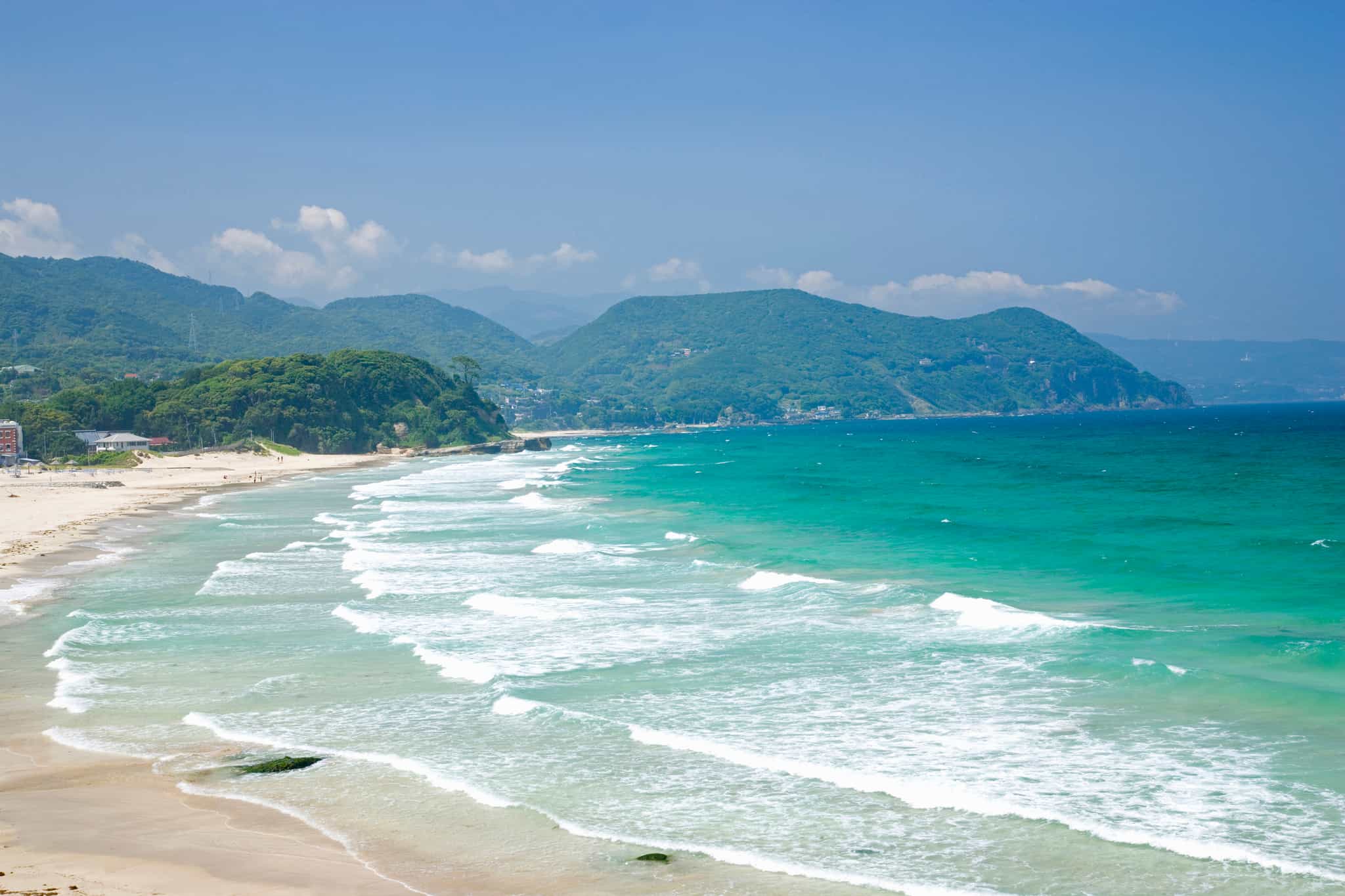
Kayak past Hagachizaki Bay, home to a troop of over 300 wild Japanese macaque monkeys
Bed down in traditional 'ryokans'; don your robe, roll out your futon and hop in a steaming ‘onsen’
Hit the backstreets of Tokyo in search of hidden ‘izakaya’ for the ultimate foodie dive bar experience
Key Information
Day 1
Touch down in Tokyo
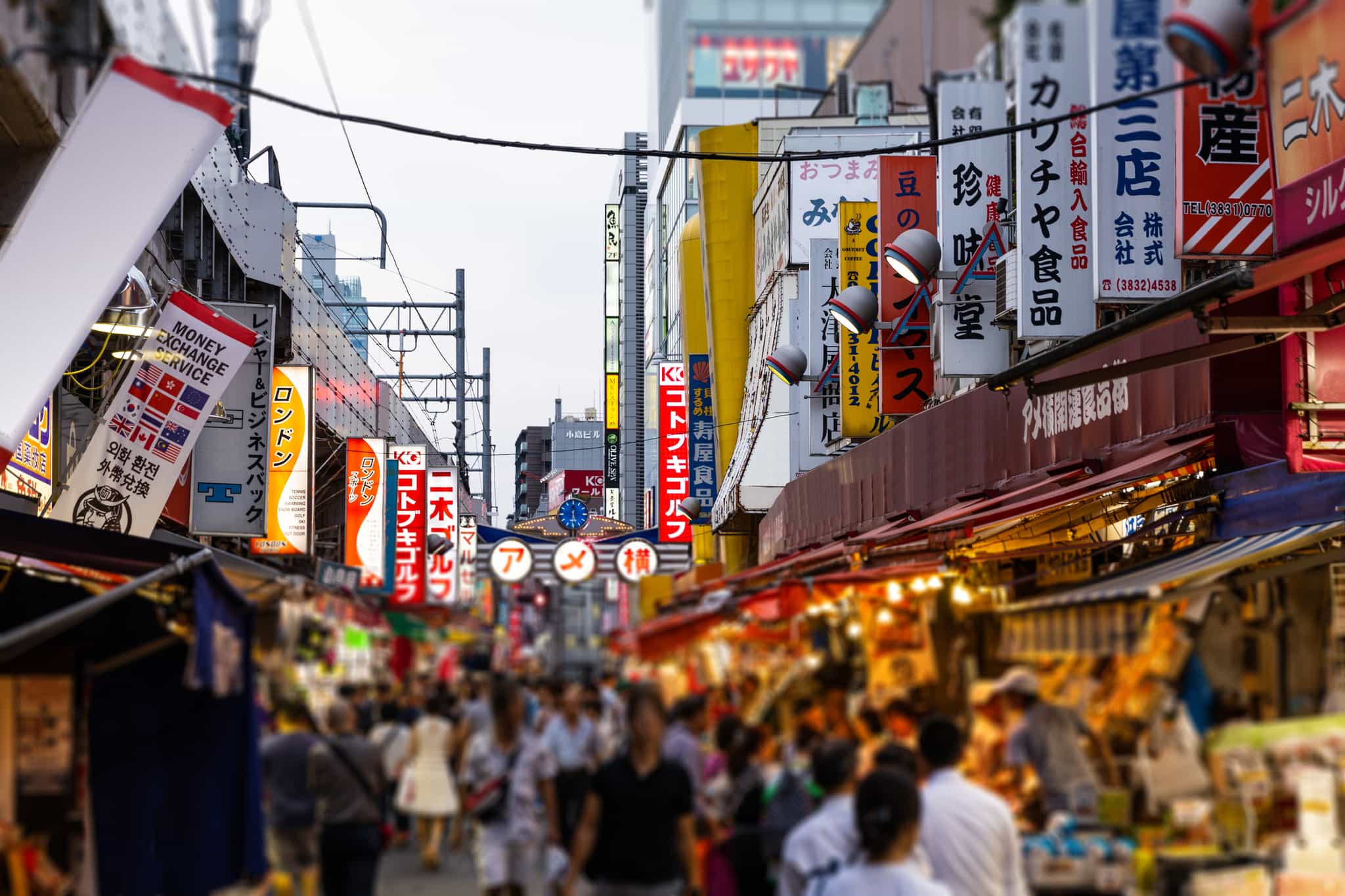
Welcome to Tokyo, sensory overload coming your way! You’ll meet up with the group at the hotel in Asakusa before heading out for some dinner. Lined with street food stalls and backstreet ‘izakayas’, this district is a great place to hang out and get to know your fellow crew.
Day 2
To the sea
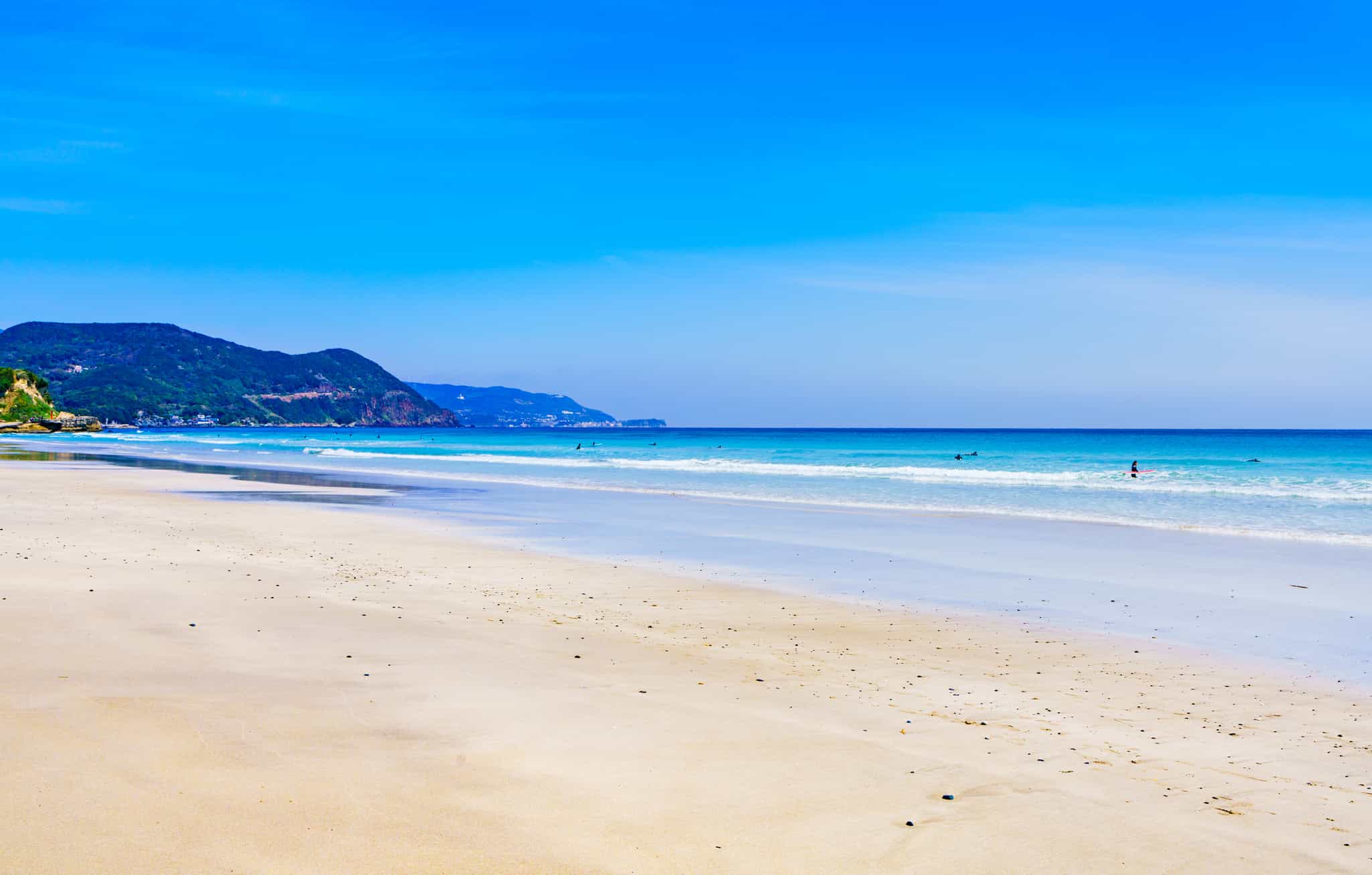
Kayaking
A quick transfer to the central station to start your three-hour train journey to the coast, whizzing past Mt Fuji and the rolling tea terraces that surround it. Arriving on the east coast of the Izu Peninsula late morning, you’ll set up your kayaks and hit the water as you paddle from Stumekizaki to the white sand beach of Shirahama. You'll spend the night in the fishing town of Shimoda at a small local 'ryokan', time for your first Japanese set meal and futon slumber.
Day 3
Yumigahama via 'Surfers Paradise'
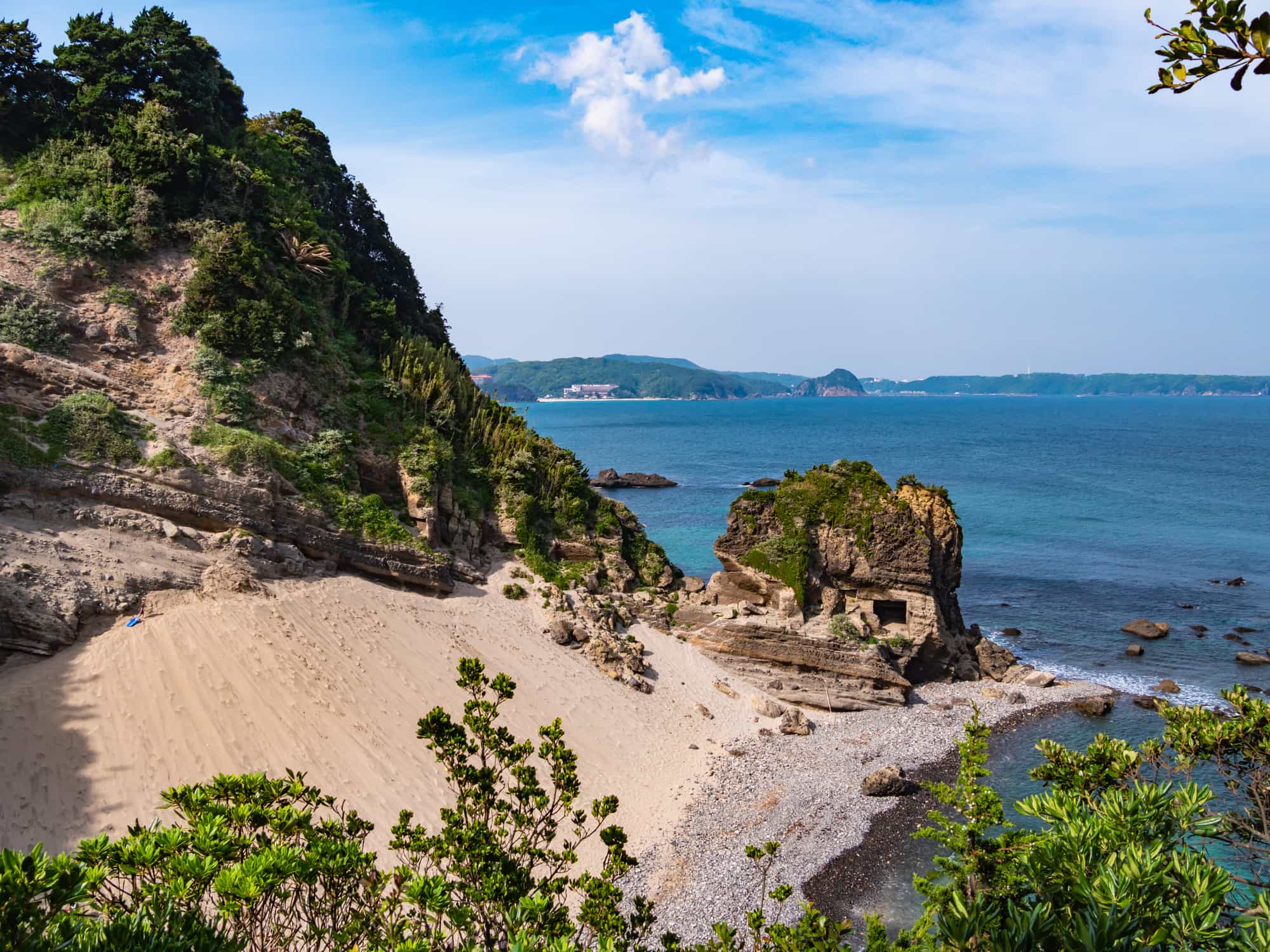
Kayaking
Early start today for those who fancy visiting the local fish market and grabbing breakfast there - the regional speciality is ‘Kinmedai’ (Red Bream) and is served fresh off the boat in the on-site restaurant. Jumping back in your kayak you’ll make your way around the peninsula past Kisami Ohama beach, a famous local surf spot. The landscape starts to get more wild today, you’ll paddle past craggy rocks and isolated beaches and weave your way through dramatic sea caves stopping for a swim or snorkel before checking into the ryokan in Yumigahama.
Day 4
To the remote west coast
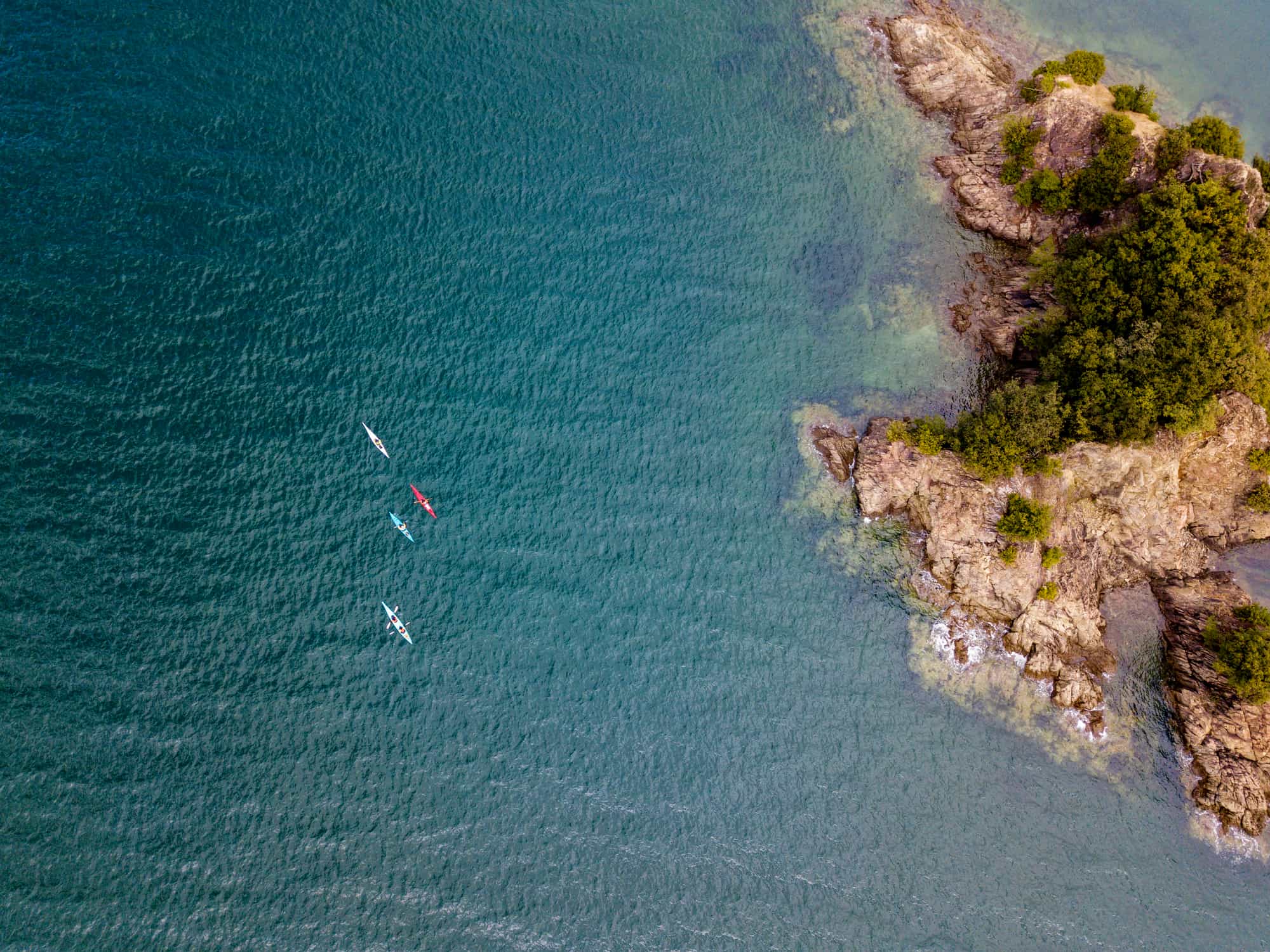
Kayaking
The challenge today is to pass around the southern tip of the Izu Peninsula as you paddle from Yumigahama all the way to the remote village of Koura, along the way passing shrines and the Irozaki Cape lighthouse. There’s a small section that can feel more exposed to the sea conditions but you’ll have the assistance of your expert guide to get you around safely.
Day 5
Monkey Bay
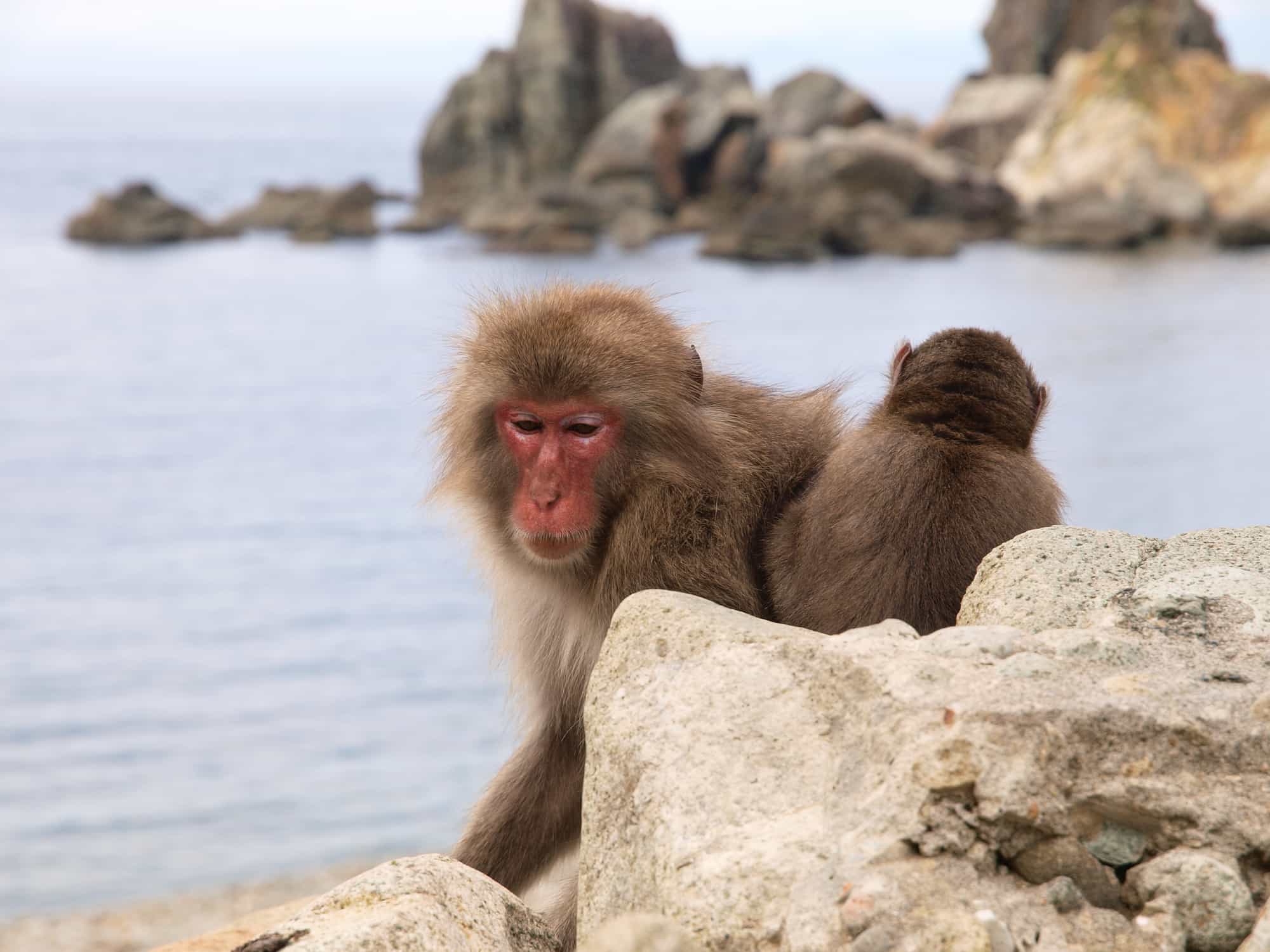
Kayaking
Final day in the kayak today as you explore one of the most beautiful stretches of the Fuji-Hakone-Izu National Park. Conditions allowing, you’ll paddle past the towering red cliffs of Hagachizaki Bay, under the watchful eye of the hundreds of monkeys who call it home. Once back on shore, you'll hop on the bus back to Shimoda for a saké celebration dinner and another futon slumber.
Day 6
Hike the seven waterfalls of Kawazu
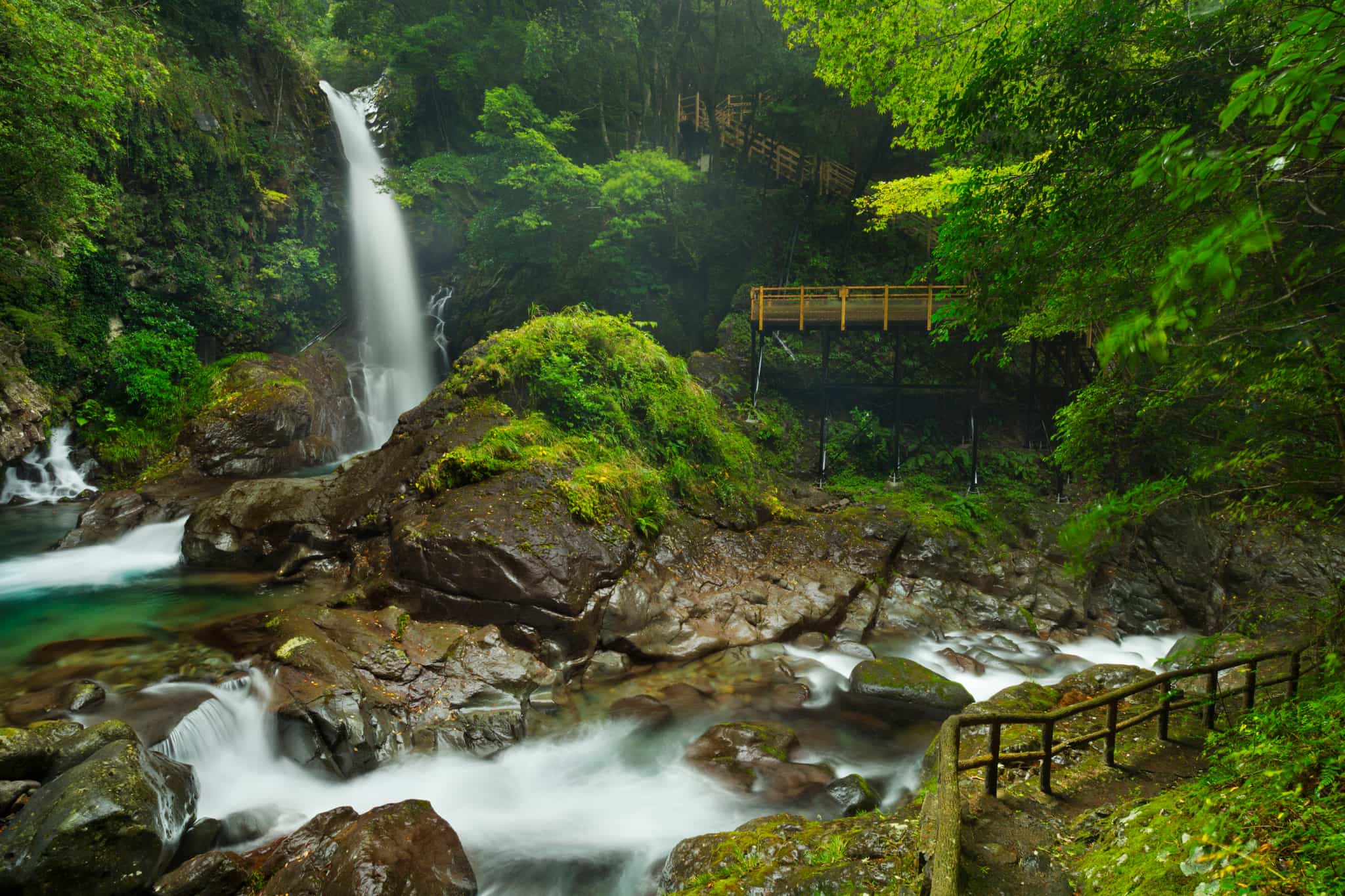
Hiking
This morning it's time to lace up your hiking boots and head deep into the Amagi highlands. You’ll follow an ancient track that winds through native beech forest and farmland until you get to the seven waterfalls of Kawazu. In the afternoon you'll say goodbye to the Izu Peninsula, taking the scenic four-hour journey on local transport to Fuji-Kawaguchiko, a lakeside town which serves as the gateway to your Mt. Fuji adventure tomorrow.
Day 7
Fuji Pilgrimage Trail
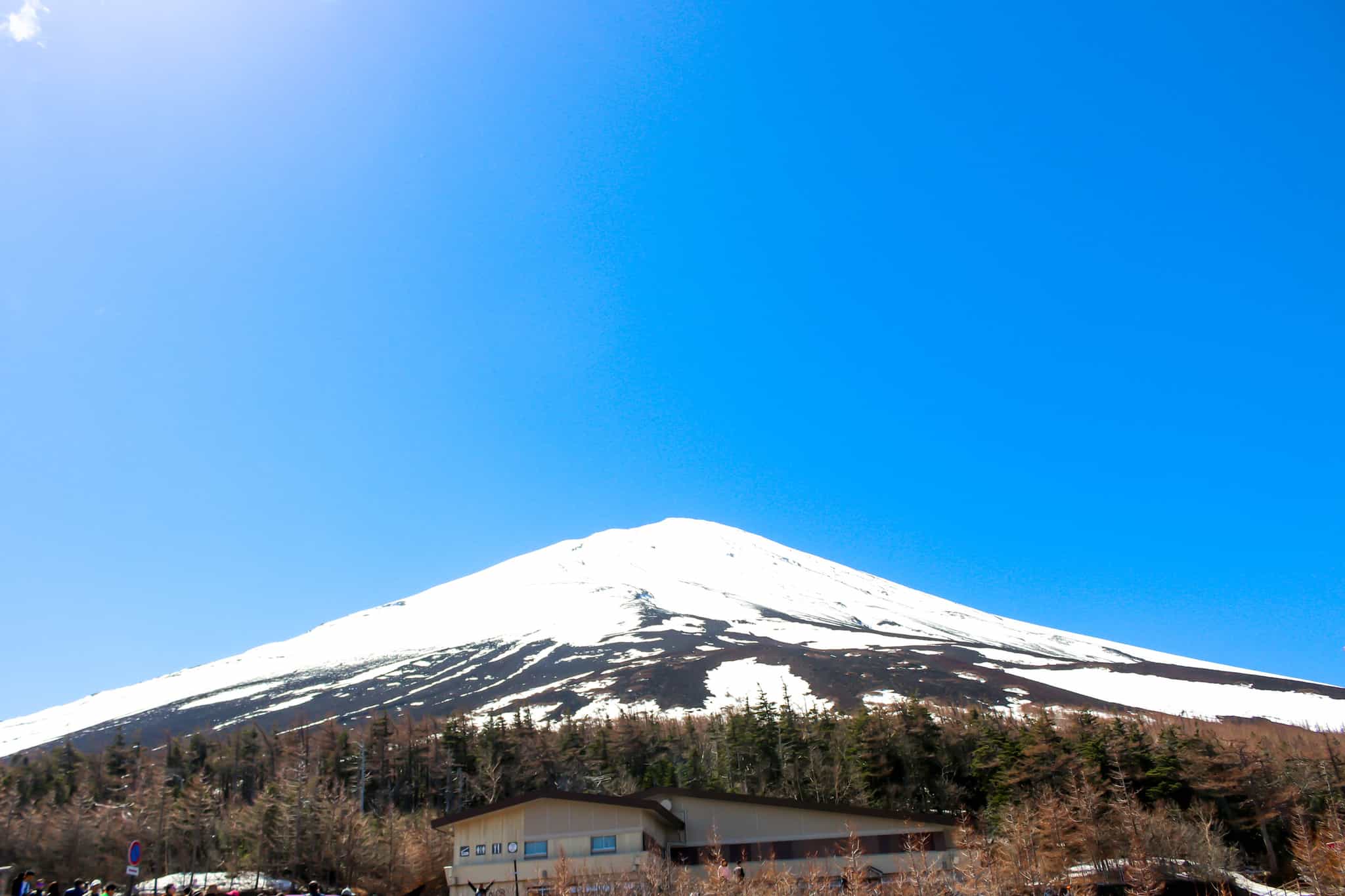
Hiking
A full day of hiking today as you take on a section of the Mt Fuji pilgrimage trail. Passing through sacred forest and past numerous shrines and temples the aim is to get to the Fuji 5th Station (2300m). This point is often used as the base camp for hikers summiting Mt Fuji (3776m), the highest mountain in Japan and a right of passage for many. On a clear day, you’ll be able to see the mountain in full, the Fuji Five Lakes as well as the towers of Tokyo far in the distance, but the towering volcano has its own weather system and conditions can be changeable. There'll be time to take it all in before dragging your tired legs back to the big city for a final farewell feast and perhaps a celebratory trip to Shibuya for the night owls.
Day 8
Goodbye Japan
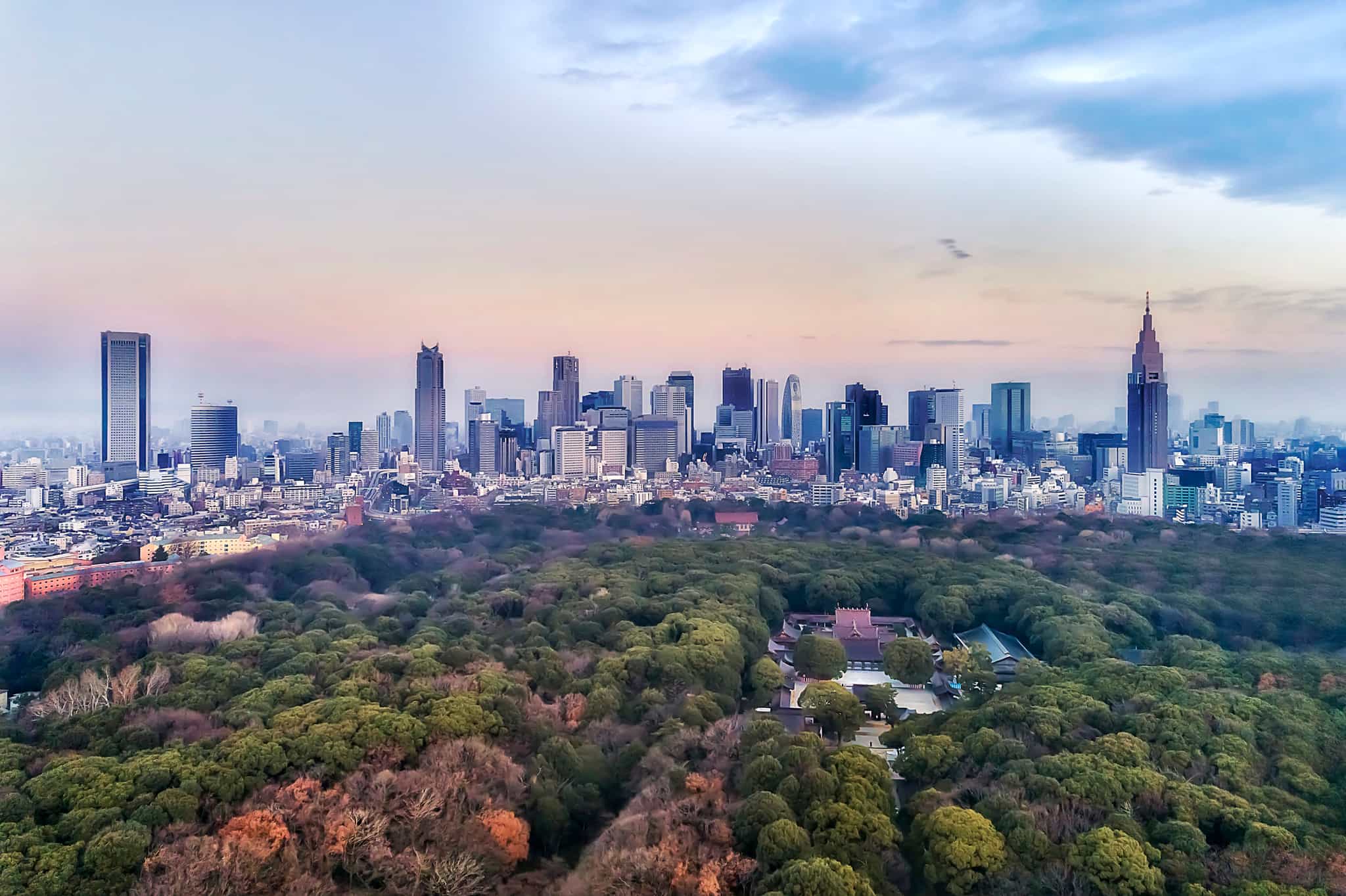
Back to the airport for your flight home. Or of course, opt to stay on for some extra time in Tokyo, there's no risk of you running out of things to do here in a hurry.
The Area
Logistics
Starts
Tokyo Airport (Haneda or Narita)
Arrive anytime on Day 1
Ends
Tokyo Airport (Haneda or Narita)
Depart anytime on Day 8
Transfers
A shared-shuttle airport transfer is provided for any day you choose to arrive and depart in Tokyo (if staying at the group hotel). A driver will meet you at either Haneda or Narita Airport.
Travel options
There are daily flights to Tokyo from major airports across the UK, Europe and N.America.
Day 1
Breakfast
Lunch
Dinner
Day 2 – Day 6
Breakfast
Lunch
Dinner
Day 7
Breakfast
Lunch
Dinner
Day 8
Breakfast
Lunch
Dinner
What is the food like?
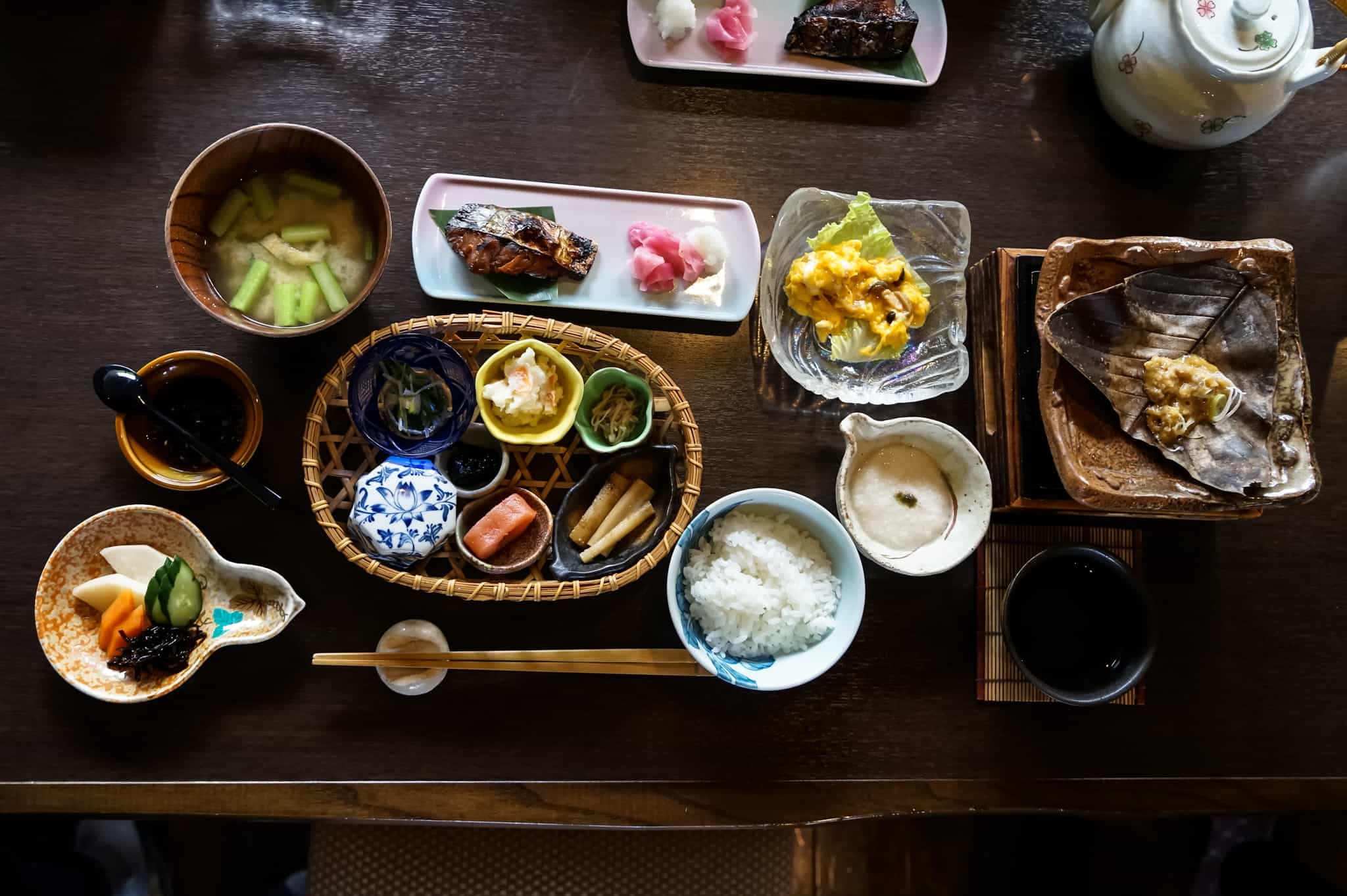
Japan is home to deliciously fresh and varied cuisine and a bowl of steamed rice is included in most typical Japanese meals. Side dishes are called 'okazu' and are served with miso soup. Meals tend to be fish heavy and are often served with saké. Street food is easily found in the cities whereas traditional set meals are more prevalent in rural locations and while staying in ryokans. Whilst kayaking, bento lunches will be sourced from stores in the coastal towns before setting out on the water each day.
Vegetarians, vegans and other dietary requirements and allergies can be best catered for with prior knowledge - please just let your host know your requirements on the passenger information form.
What is the accommodation like?
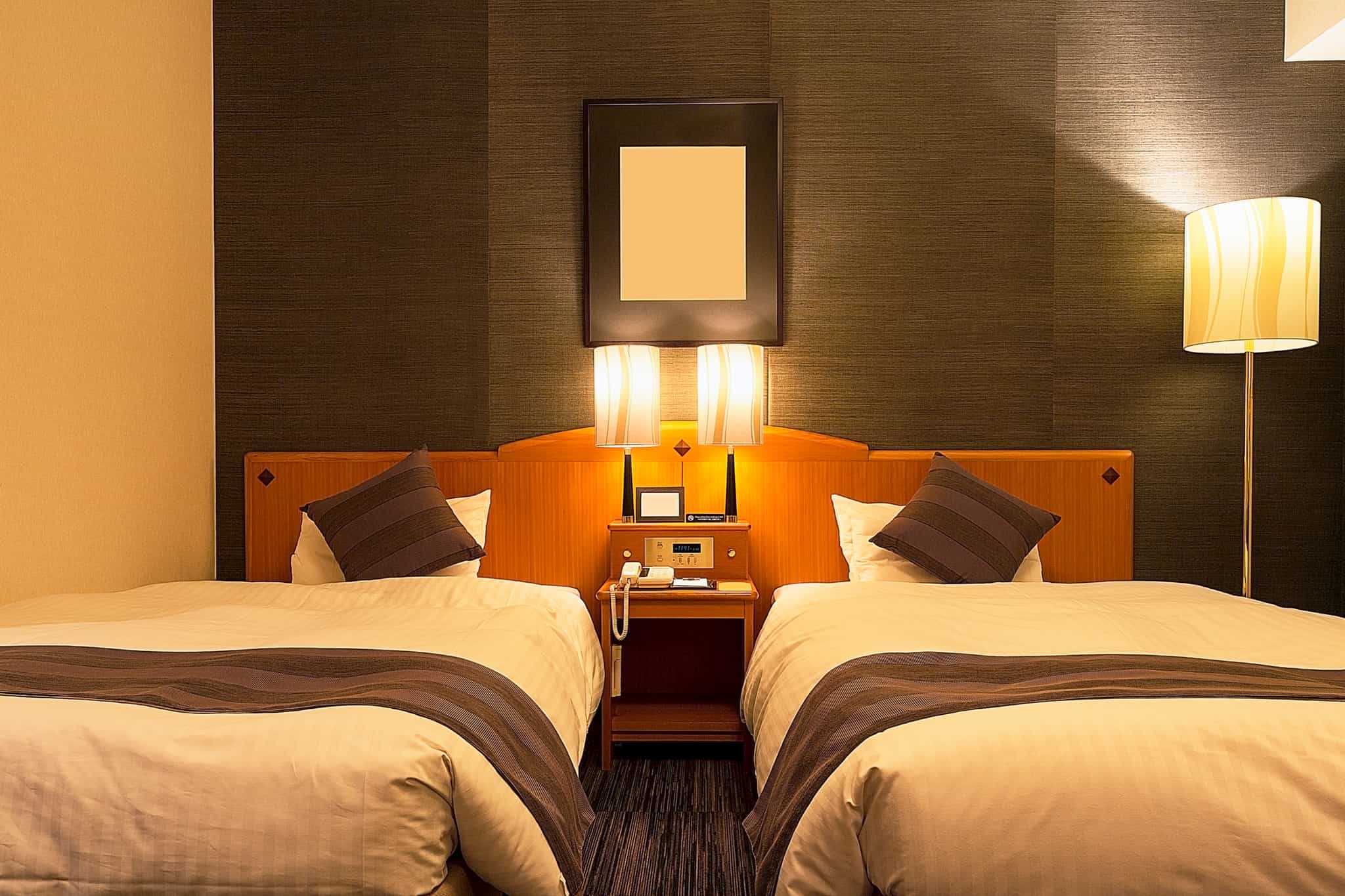
Tokyo
In Tokyo you'll stay in the popular Asakusa district in a 3-star hotel, such as the Sunroute Asakusa or similar. Rooms are twin-share with a private bathroom and breakfast is served in the on-site cafe.
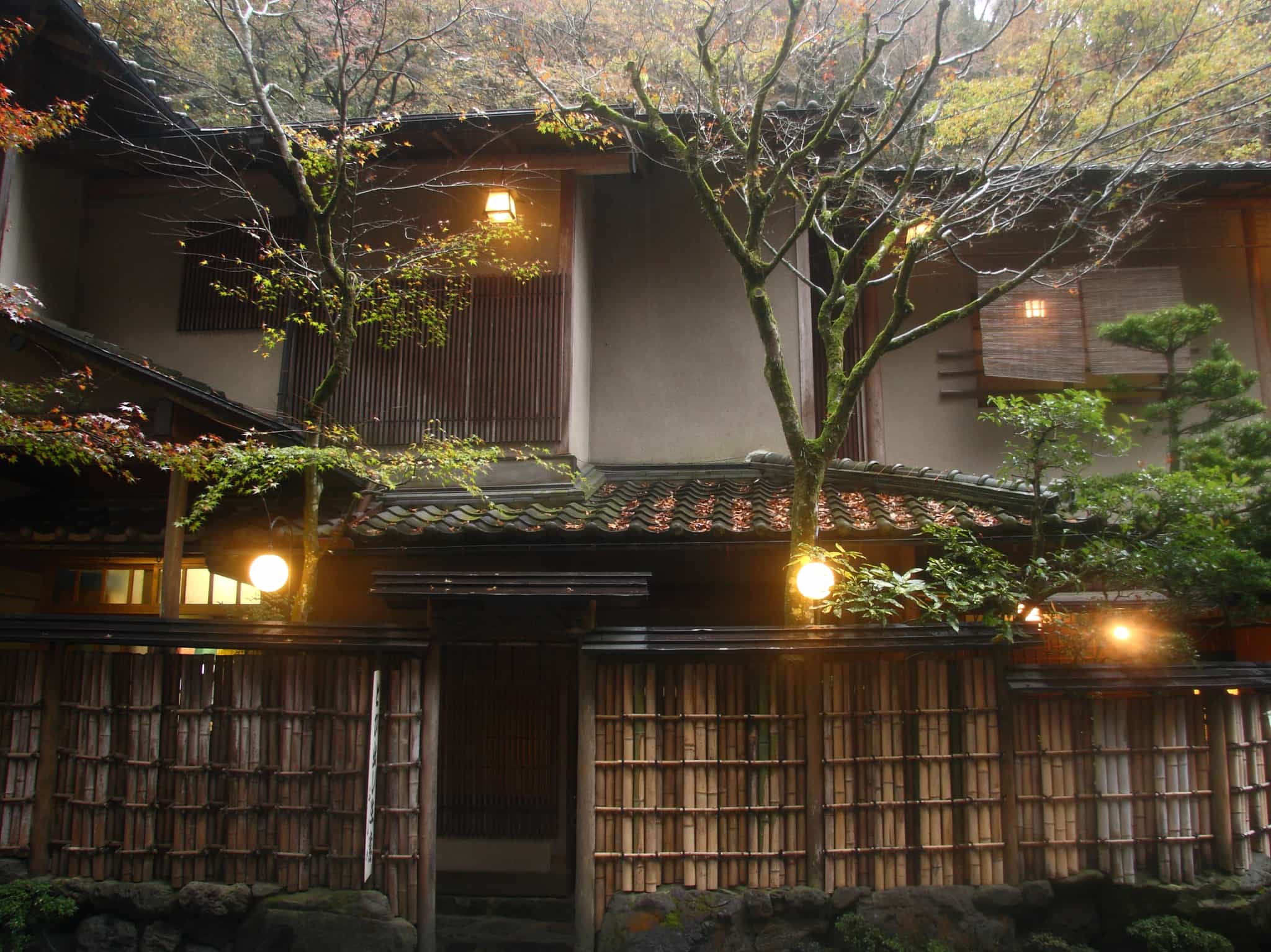
Izu Peninsula and Mt. Fuji
You'll spend 5 nights in 'ryokans' (traditional inns). Staying in a ryokan is a quintessential Japanese experience; you will sleep on futons on top of tatami mats on the floor and the rooms are separated by sliding doors. Most ryokans provide robes and slippers which are often worn to dinner and will also have a communal 'onsen' (bath) on-site instead of individual showers and bathrooms for the rooms. Onsens at the ryokan are usually shared hot spring baths that are either fed from a natural source or kept warm via mains heating. There are separate male and female times for the baths and there is strictly no mixing - you will need to wash before you get into them and clothing or swimwear is not allowed. Your guide will assist with the full etiquette when you are there.
The exact ryokans you will stay in will depend on group size and availability but some examples are:
Kanaya Ryokan in Shimoda
Ryokan Ogawa in Shimoda
Kyukamura Minami-Izu in Yumigahama
Upgrades
For solo travellers looking for their own space, an optional private room upgrade is available only for Days 1, 6 & 7 on this trip, in Tokyo and Kawaguchiko. Please see Optional Extras for the price and add this as a request at the time of booking.
We’re still waiting to collect any reviews from other travellers on this trip. However, all our hosts go through an extensive vetting process to ensure that your adventure is awesome.
Guides
Expert, English-speaking local kayaking and hiking guides
Accommodation
2 nights in a Tokyo hotel, 5 nights in a traditional Japanese guest house 'ryokan'
Meals
All breakfasts, 6 lunches and 6 dinners
Transfers
Airport transfers and train to and from the coast
Equipment
All your sea kayaking equipment
Permits
National park permits and fees
Our trips are hassle-free by design. We include all the activities and equipment, as well as many of the meals, so you can simply rock up with your rucksack and share the adventure with your new pals.
Personal Expenses
You know your own spending habits best, so please budget an appropriate amount for things like optional meals and drinks, shopping, optional activities, and laundry.
What's included?
Sea kayak and paddles
Lifejacket
What do I need to bring?
BAGS
Soft overnight duffel bag or rucksack
Daypack (20+ litres)
Small drybags
CLOTHES
Waterproof jacket
Breathable wicking layers
Fleece jacket or similar
Lightweight trousers/shorts/skirts
T-shirts
Underwear & socks
Sunglasses
Sunhat
Something to sleep in
Hiking boots or shoes (worn-in)
Neoprene booties/shoes for kayaking
Sandals
OTHER
Universal travel plug adapter
Passports (and visas)
Travel Insurance documents
Ear-plugs
Suncream
Personal first-aid kit
Personal items (biodegradable toiletries, sanitary wear etc)
Quick-dry towel
Alcohol hand-gel
Headtorch or torch
Reusable water bottle (x1 litre)
Energy bars and snacks
Optional Private Room Upgrade - Only available on Days 1, 6 & 7
Payable Before Departure
Optional Private Room Upgrade - Only available on Days 1, 6 & 7
…
Pre-trip accommodation in Tokyo (Single)
Payable Before Departure
Pre-trip accommodation in Tokyo (Single)
…
Pre-trip accommodation in Tokyo (Twin/Double)
Payable Before Departure
Pre-trip accommodation in Tokyo (Twin/Double)
…
We partner with the World Land Trust to ensure this trip achieves Net-Zero emissions. We also support their Buy an Acre programme, helping local communities to buy and protect natural habitats in perpetuity.
What's the number?
It works out on average at 385kg of CO2 emissions per person, including all local transport, accommodation, food, activities, guides, staff and office operations.
The only thing it doesn’t include right now is flights and travel to the destination. We do make an overall estimate across all our customers separately, but as we don’t book flights, have customers from all corners of the world, and no way of reliably knowing their travel plans, we simply can’t include an individual number in the figure on display here. We’ve got a goal to fix that, so that when you book, there is a way to measure and mitigate the carbon emitted by your flight too.
But what does the number mean?
Yep, hard to picture eh? To give you an idea:
- Driving 1000 miles/1609km would be approximately 281kg of CO2 in an average car (or 140.5kg per person, if there were two of you in it).
- A return economy class flight between London and New York would be approximately 1619kg (1.66 tonnes) per person.
- 10 trees in a temperate forest are estimated to remove approximately 250kg of CO2 from the air in a period of 5-10 years.
What are we doing about it?
Our trips are relatively low-carbon by design, and we're working with all our hosts to develop long term carbon reduction plans. We partner with the World Land Trust to ensure this trip achieves Net-Zero emissions. We also support their Buy an Acre programme, helping local communities to buy and protect natural habitats in perpetuity, ensuring the protection of the reserve and its wildlife.
Want to know more?
Amazingly, no international travel company has ever publicly published their carbon measurements before, as far as we know. We believe that must change, quickly. So we’re openly sharing the method we used in the hope that other companies will be able to more easily follow suit and build on what we've done so far. You'll find it all here.
Your main overnight bag will be transported daily to the next overnight spot so you will only need to carry what you need for that day. While kayaking it's recommended that you store everything in a dry bag, 10 litres in size should probably do for your daily items. While hiking, a small daypack will suffice to carry water and an extra layer.
The tap water in Japan is safe to drink so please bring a refillable bottle with you, it will be well used.
You will be able to store your bags at the ryokan you stay in on Day 2 and Day 7 so should only take what you really need on the activities with you. Ask you guide at the start of the trip for more information.
Tipping isn't customary in Japan and is not expected – in fact, it will sometimes be considered impolite. As a general rule you should not leave a tip in Japan, with a few notable exceptions - one being tour guides. If you feel that your tour leader has provided an excelllent service over the course of your trip, you may want to show your appreciation of their services. Your host suggest 500-1000JPY per person per day as a guidline.
Sure can! Over 70% of our travellers travel solo, it’s a great way to meet like-minded people.
Our team of Adventure Hunters co-create exclusive adventures which are run by highly vetted, specialist hosts. The trip is run by our trusted host partner in the destination. We only work with independent, local, in-destination experts who know the very best places to explore and how to stay safe. Read more information about the local teams we partner with. You’ll be introduced to the host straight after making a booking via the Much Better Adventures platform.
Much Better Adventures refer to the UK Government’s official travel advice when designing trips and monitoring trip operations. We recommend that all customers are familiar with the practical information provided on the Government’s FCDO website, where current travel advice can be found by searching for the applicable destination(s).
For customers joining this trip from other international destinations – please also read the official travel advice applicable to your country of residence/origin, as this may differ.
We recommend checking out the country-specific information and also talking to a travel nurse.
We automatically convert prices from the local currency that a host receives to your chosen currency. We update our exchange rates on a daily basis so this does mean that prices displayed on the site are subject to currency fluctuations, which is why you may see them change over time.
If you wish to change the currency you pay in, head to the bottom of the page.
All of our group adventures are specially designed for adults to enjoy as we want these adventures to bring together outdoorsy people who are truly like-minded. You must be over 18 to join one of our trips.
You're always in good company on one of our adventures.
Our trips are typically made up of a mixture of solo travellers and small groups of 2 or 3 friends, with most in their 30s-50s.
Our sociable adventures are solo-friendly by design and naturally attract outdoorsy people with a shared mindset; a love for adventure, a desire to push themselves and meet awesome, like-minded people along the way.
It’s this camaraderie that has so often turned a great adventure into a life-changing one.
Don't just take our word for it:
- 95% of people rate the group dynamics on our trips 5/5
- 90% of people recommend joining a trip to make new friends
- 75% of people have met people on our trips that they would now consider friends
See here for more info about the Much Better Adventures tribe.
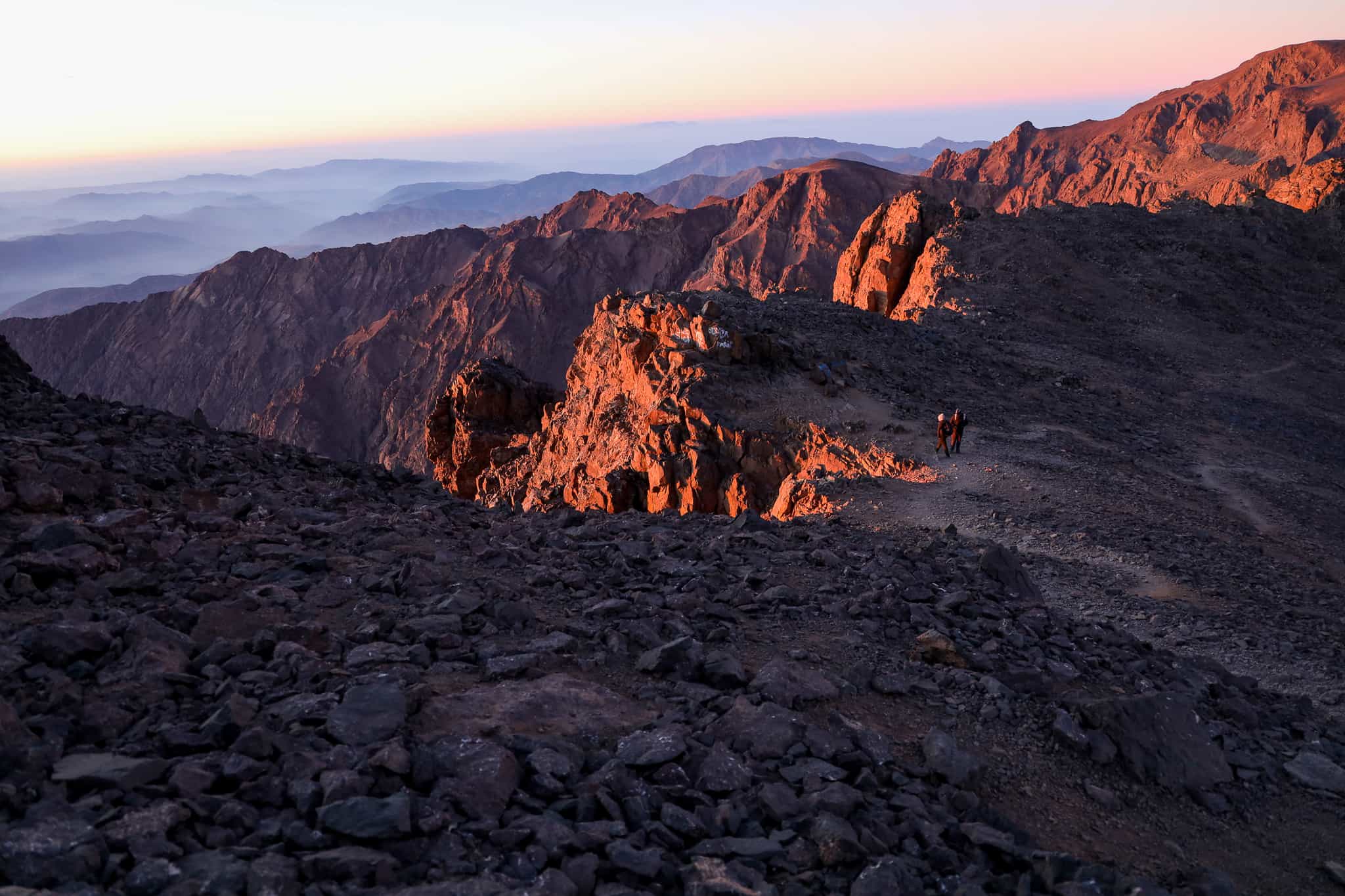
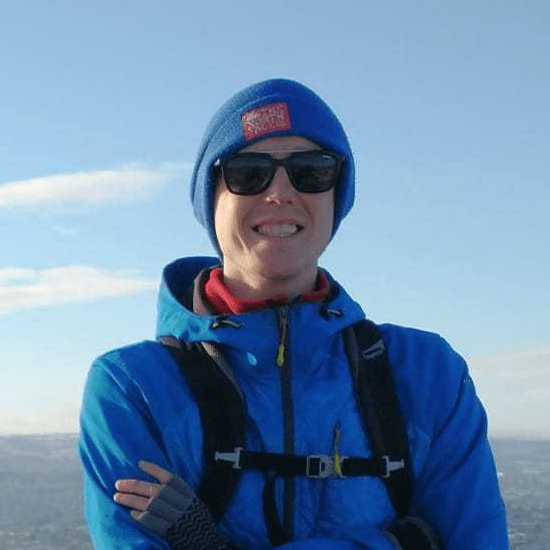
Need help finding flights?
From logistics and how to get there, to fitness, group dynamic and trip difficulty, Rory and his team of friendly experts are on hand to help.
We've got your back
Guaranteed to run
All Much Better Adventures trips are now guaranteed to run. Once you’ve booked your spot you can immediately make your travel arrangements, no uncertainty, no hanging about (excludes 'request to book' departures). Full details
Flexible payments
Secure your spot with the minimum deposit and pay off the remaining balance in as many instalments as you like, with no interest or fees. Full details
Happiness Guarantee
We’re so confident you’ll have an amazing time we’ll put our money on it. Full details
Full financial protection
To give you complete peace of mind Much Better Adventures is backed by ABTOT, ABTA and ATOL memberships. Full details
Tried & Trusted
Much Better Adventures is rated ‘Excellent’ on Trustpilot with over 1000 verified trip reviews averaging 4.8/5.
Connect before you go
You'll be invited to join a WhatsApp group to get to know each other before your big adventure together. Full details
DEPARTURE DATES





